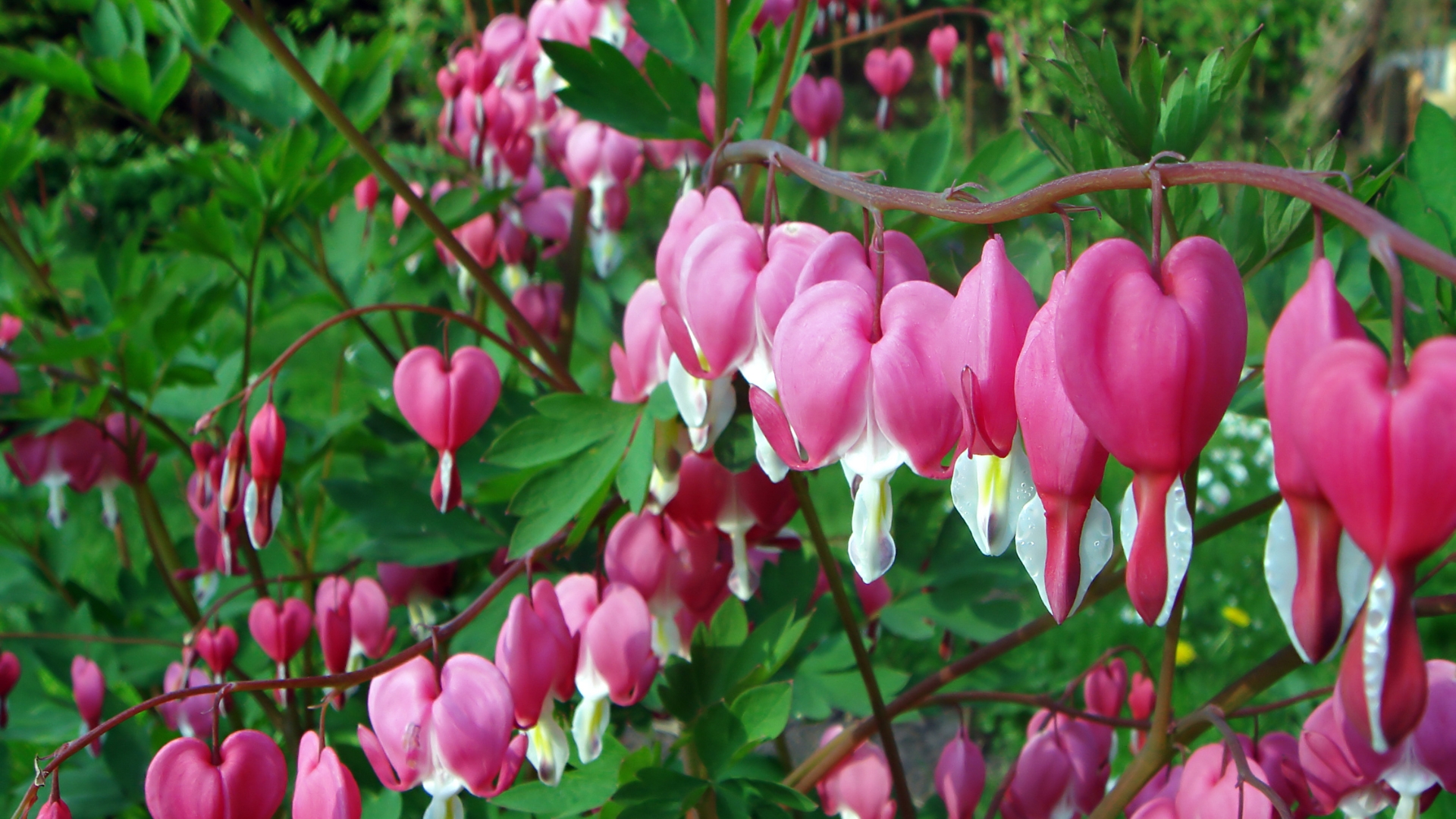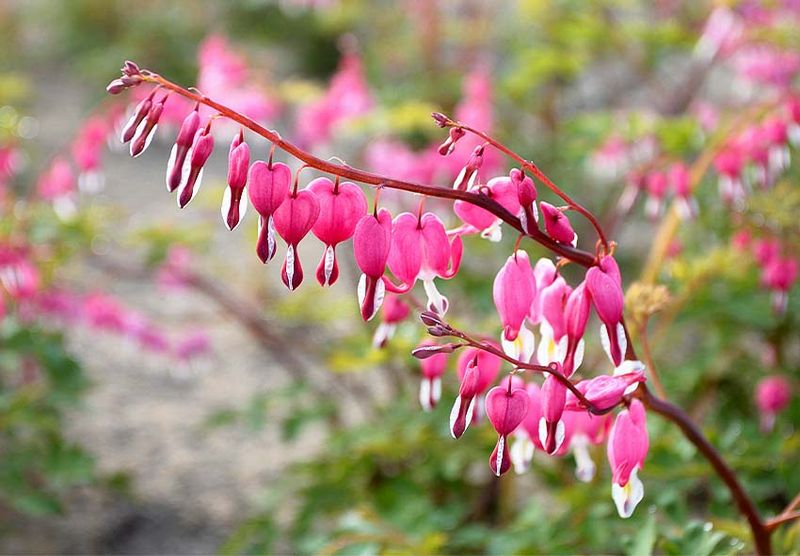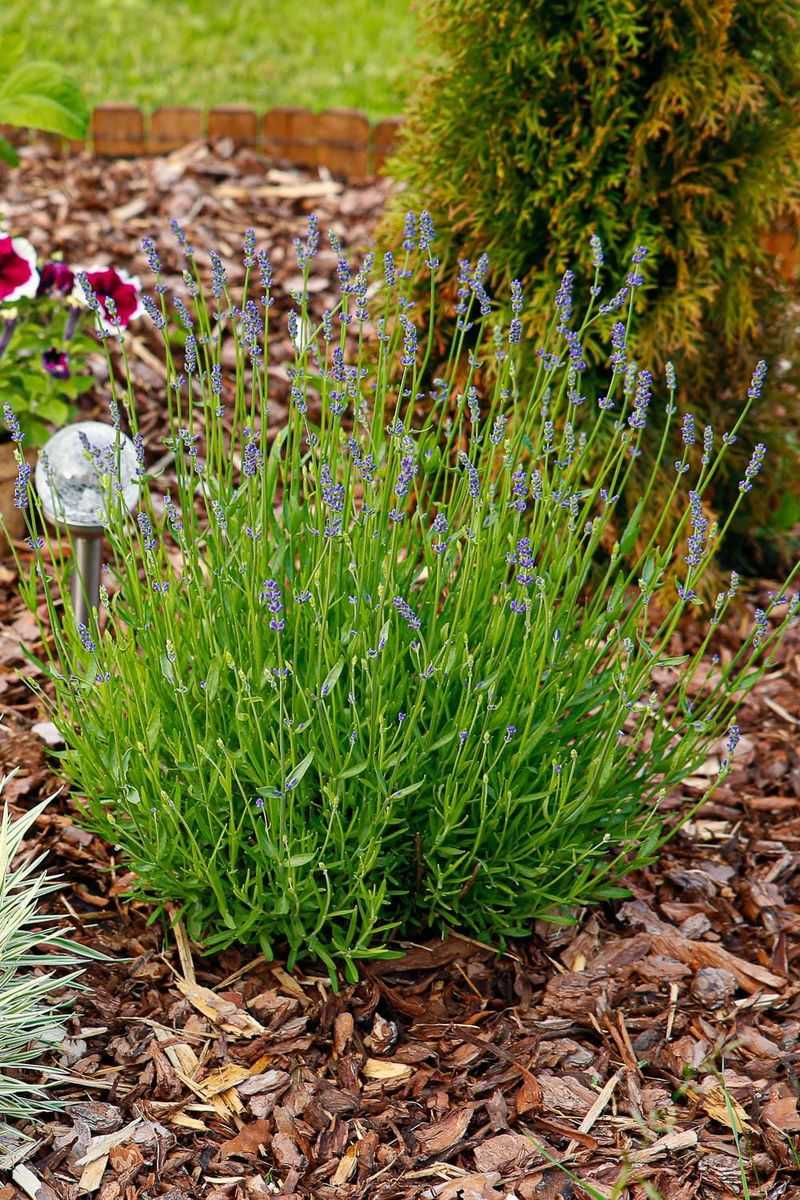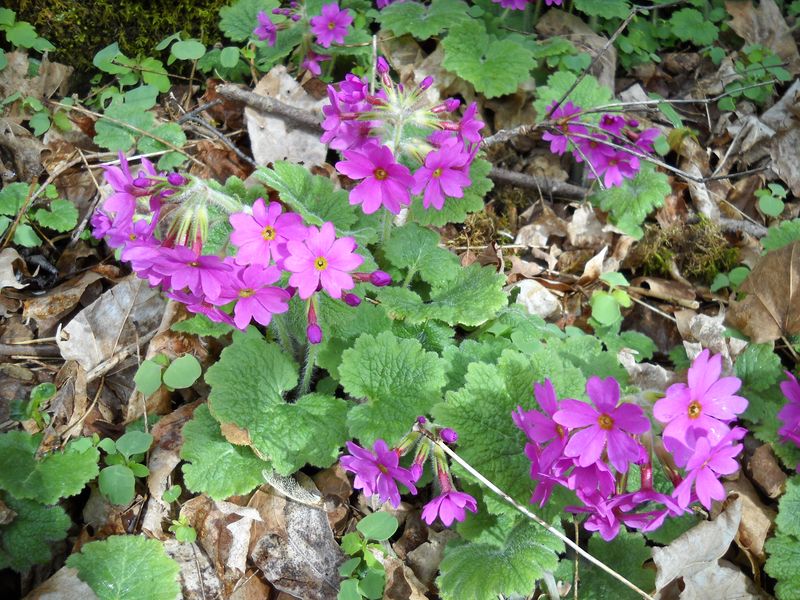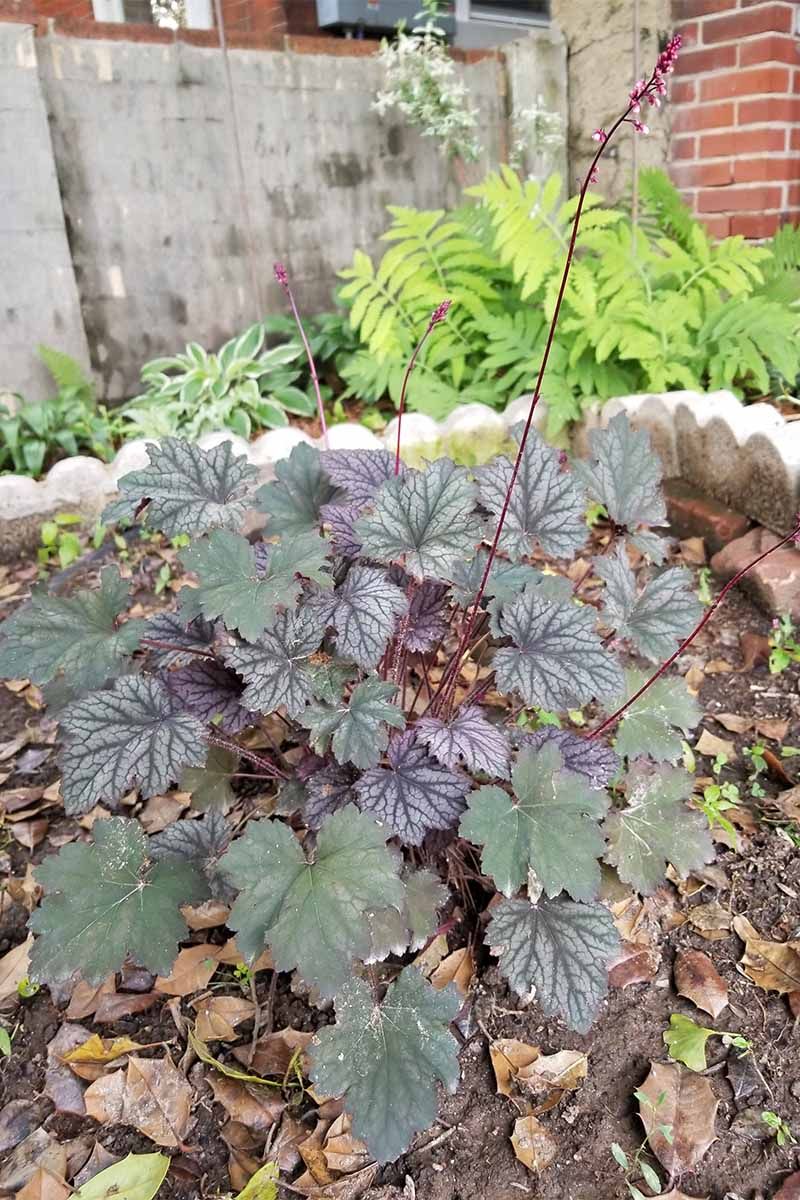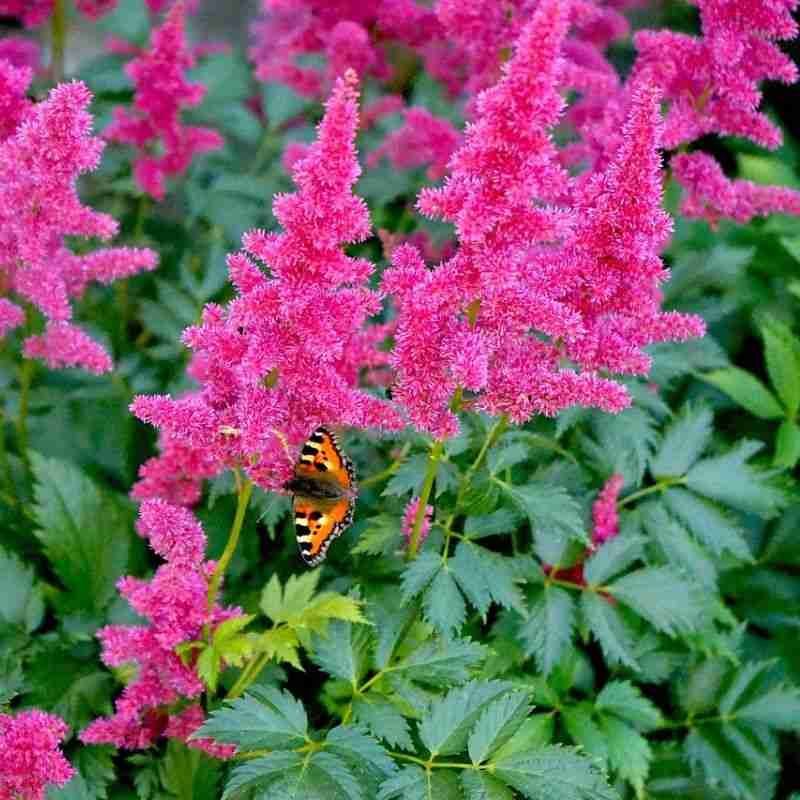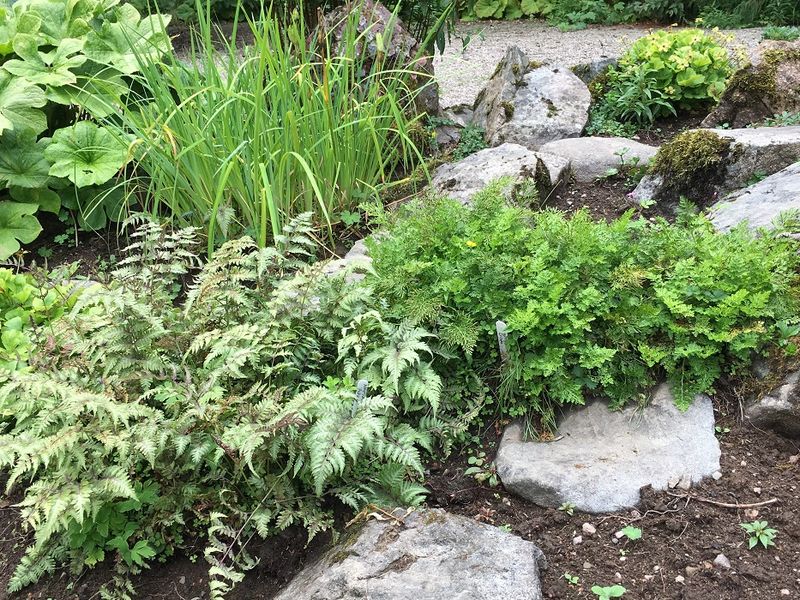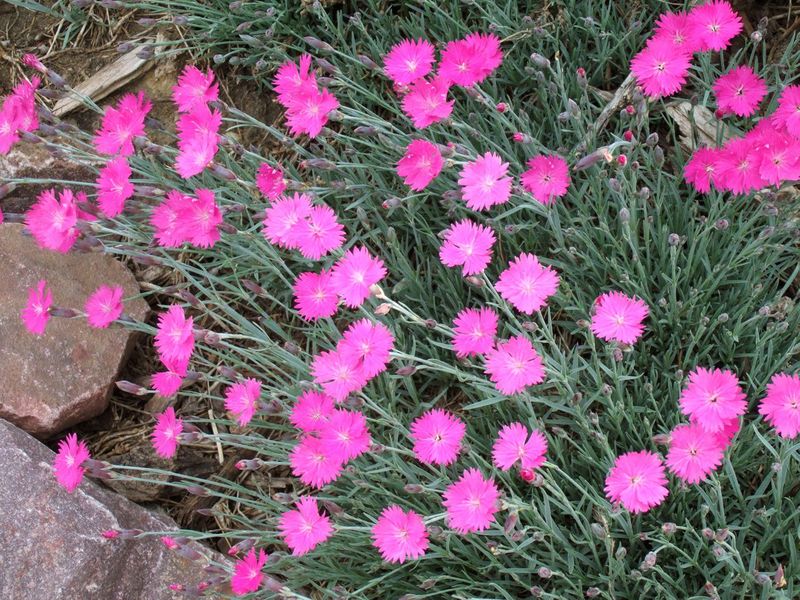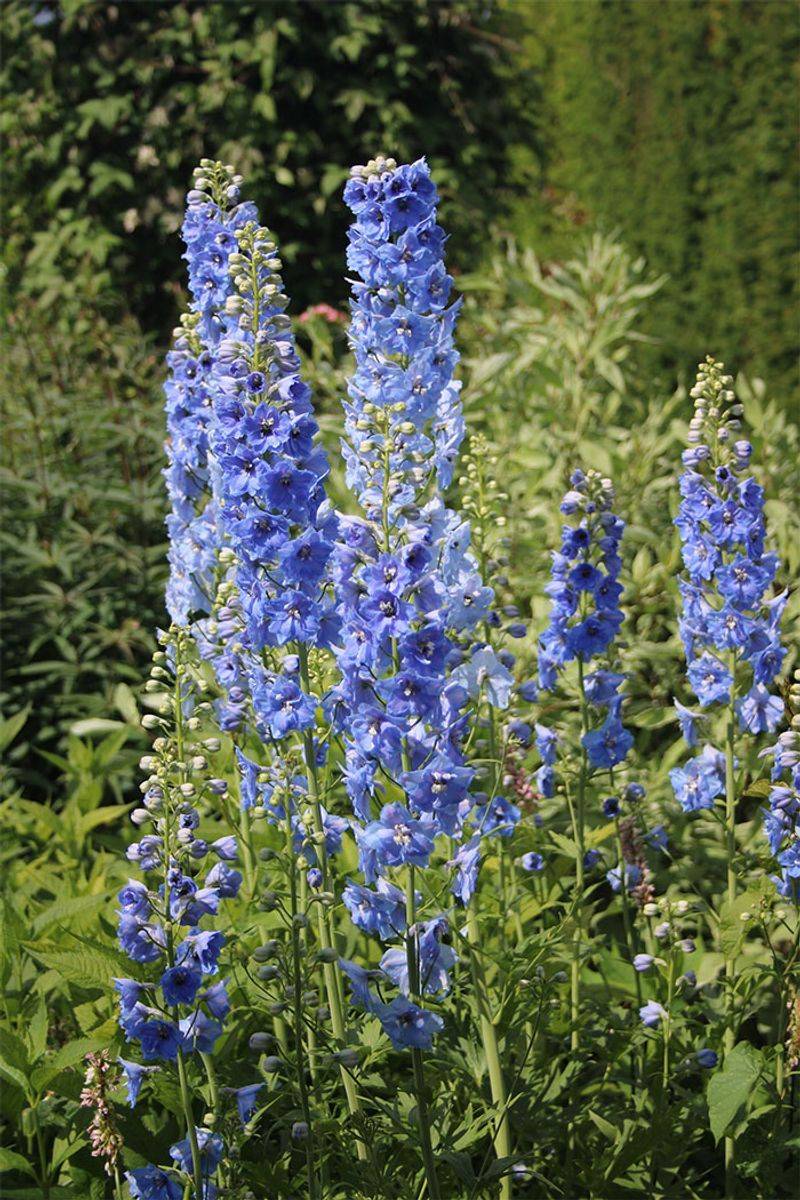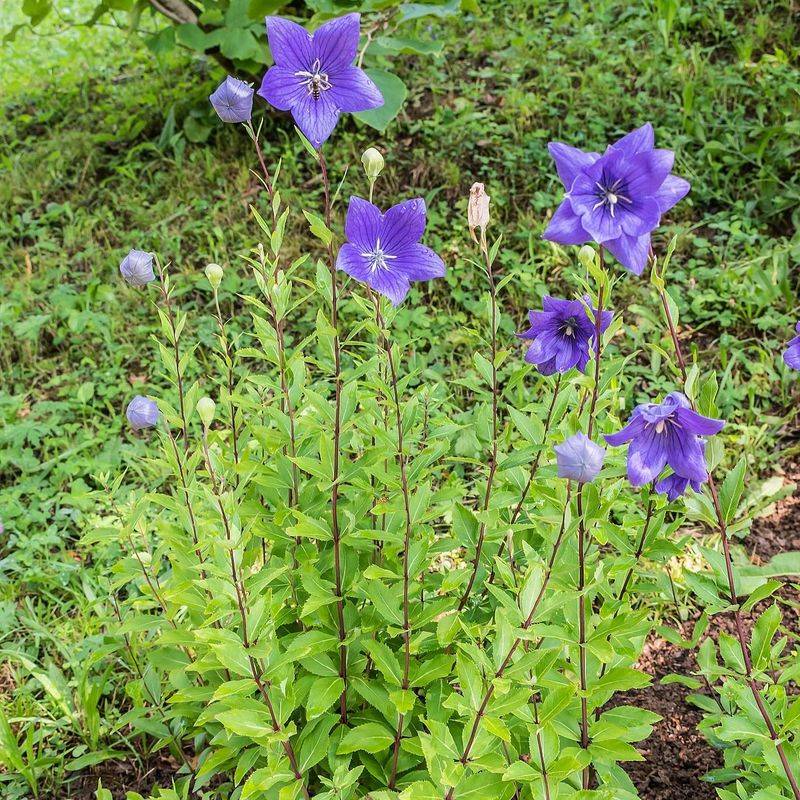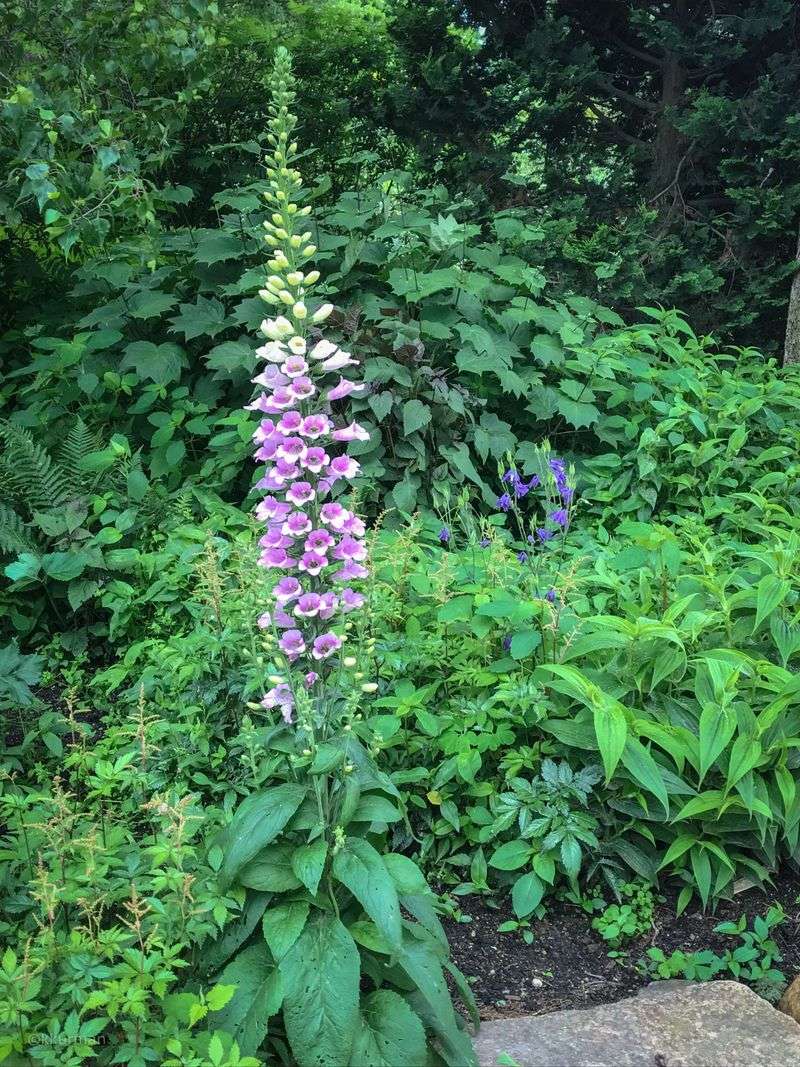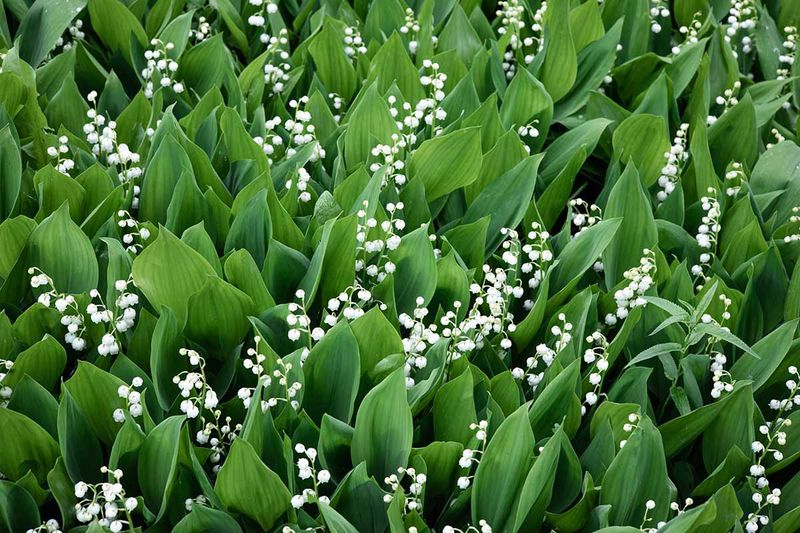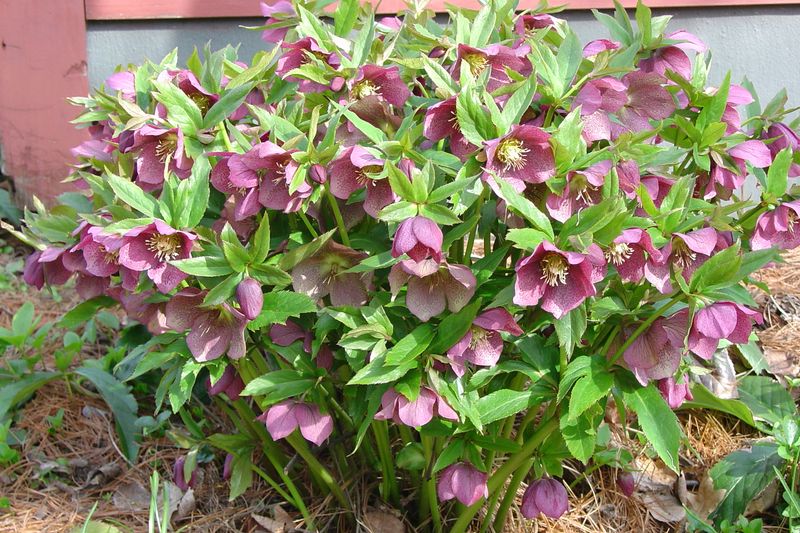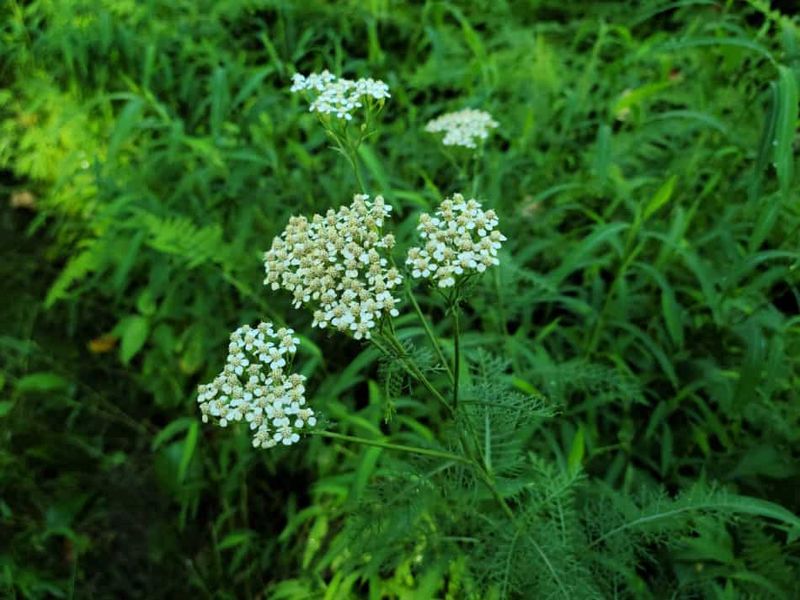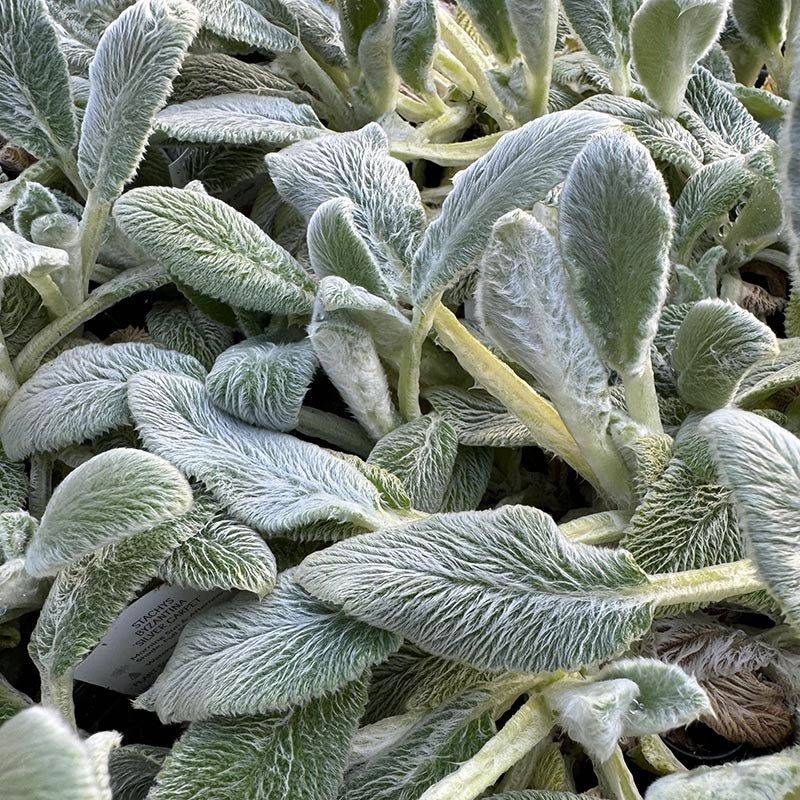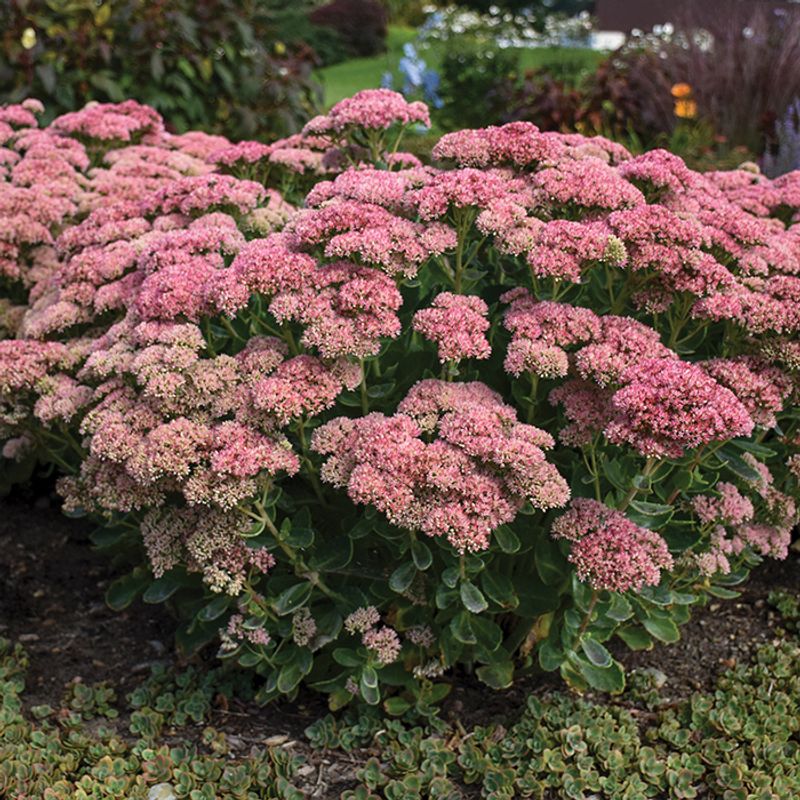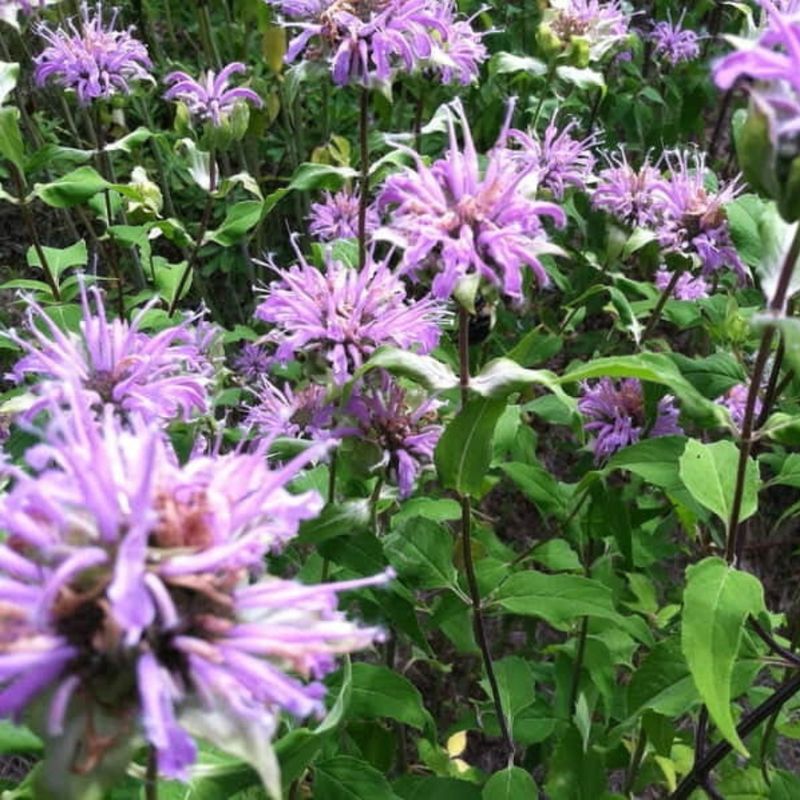Choosing the right perennials for your garden can make the difference between constant weeding and a relatively maintenance-free landscape. Some perennials simply don’t have what it takes to stand up to aggressive weeds, leaving you with extra work and frustration. Learning which plants struggle against weeds and which ones naturally suppress them will save you countless hours of garden maintenance.
1. Delicate Bleeding Hearts Become Overwhelmed
Bleeding hearts boast stunning heart-shaped blooms but lack the aggressive root system needed to fend off invaders. Their delicate nature and preference for woodland settings makes them particularly vulnerable to fast-spreading weeds.
Once established, these plants go dormant in summer, creating bare spots where weeds eagerly take hold. For best results, plant bleeding hearts in containers or provide them with regular weeding and a thick layer of mulch to stand a fighting chance.
2. Lavender’s Slow Start Creates Weed Opportunities
Beloved for its fragrance and purple blooms, lavender takes its sweet time establishing in the garden. During this vulnerable period, opportunistic weeds easily outpace its growth and compete for resources.
The wide spacing typically recommended for lavender plants creates perfect real estate for unwanted visitors. Young lavender requires vigilant weeding and mulching until it reaches maturity, making it a high-maintenance choice for gardeners seeking easy-care options.
3. Primroses Fall Prey to Aggressive Competitors
Spring-blooming primroses bring early color but struggle against established weeds. Their shallow root systems and compact growth habit give them little competitive advantage in the battle for soil resources.
The low-growing nature of primroses means taller weeds quickly shade them out, reducing flowering and weakening the plants over time. Gardeners often find their cherished primrose patches shrinking year after year as more aggressive plants encroach from all sides.
4. Coral Bells Lose the Battle for Space
Coral bells (Heuchera) captivate with colorful foliage but disappoint when it comes to weed resistance. Their clumping growth pattern leaves plenty of bare soil between plants where weeds readily establish.
The relatively slow growth rate of coral bells means they rarely fill in spaces quickly enough to prevent weed invasion. Even established plants can be overrun when aggressive weeds push through their delicate root systems, often resulting in stunted growth and reduced ornamental value.
5. Columbines Surrender Ground Easily
Columbines charm with unique spurred flowers but fail to defend their territory against weedy invaders. Their tendency to self-seed creates an illusion of spreading, but individual plants lack competitive vigor.
The biennial or short-lived perennial nature of columbines means they’re constantly in flux, never forming dense stands that might discourage weeds. Gardeners often discover their columbine patch has been infiltrated by aggressive weeds that exploit gaps between the airy foliage.
6. Astilbe’s Shade Requirement Creates Vulnerability
Feathery astilbe plumes add vertical interest but struggle mightily against weeds, especially in partial shade where many weeds thrive. Their preference for consistent moisture creates ideal conditions for aggressive water-loving weeds.
The seasonal nature of astilbe growth means they disappear entirely in winter, leaving bare spots for early-emerging weeds to establish. By the time astilbe breaks dormancy in spring, weeds have often already claimed valuable territory and resources.
7. Japanese Painted Ferns Lack Competitive Edge
Japanese painted ferns showcase stunning silver-blue fronds but prove ineffective at suppressing weeds. Their slow spread and minimal ground coverage leave ample opportunity for unwanted plants to establish.
The delicate nature of these ferns means they’re easily damaged during manual weeding efforts. Gardeners often find themselves in a catch-22: leave the weeds and watch the ferns suffer, or risk damaging the ferns while trying to remove the weeds.
8. Dianthus Creates Gaps Weeds Exploit
Sweet-scented dianthus forms attractive mounds but struggles to create weed-proof plantings. The spaces between plants become highways for aggressive weeds to spread throughout your garden beds.
Many dianthus varieties are short-lived perennials that decline after a few years, creating even more opportunities for weeds. Their compact size means they’re easily overshadowed by taller weeds, which can quickly reduce flowering and overall plant vigor.
9. Delphinium’s Tall Habit Leaves Base Exposed
Majestic delphiniums reach skyward with spectacular blooms but leave plenty of room at ground level for weeds to establish. Their upright growth habit creates minimal ground coverage, allowing sunlight to reach the soil surface.
The relatively sparse foliage of delphiniums does little to shade out competing weeds. Many gardeners discover that maintaining these stately perennials requires constant vigilance against the weeds that readily colonize the base of these plants.
10. Balloon Flowers Provide Poor Ground Coverage
Balloon flowers delight with their puffy buds but disappoint in their ability to suppress weeds. Their upright, narrow growth habit leaves significant bare soil exposed to weed seeds.
The late emergence of balloon flowers in spring gives weeds a considerable head start each growing season. By the time these perennials break through the soil, many weeds have already established strong root systems and claimed valuable garden real estate.
11. Foxgloves Create Temporary Weed Barriers
Dramatic foxglove spires create vertical drama but offer only temporary weed suppression. Their biennial nature means they disappear entirely after flowering, leaving gaps for weeds to exploit.
Even during their growing phase, foxgloves form rosettes with spaces between plants where weeds easily establish. Self-seeding can create the appearance of permanence, but individual plants come and go, never forming the dense root network needed to truly suppress weeds.
12. Lily of the Valley Struggles in Less-Than-Ideal Conditions
Fragrant lily of the valley creates dense patches in perfect conditions but often struggles elsewhere. When planted in less-than-ideal spots, it grows sparsely, allowing aggressive weeds to infiltrate and take over.
The slow-spreading nature of lily of the valley means it takes years to form weed-suppressing colonies. During this establishment period, constant weeding is necessary to prevent competitors from overwhelming these delicate woodland plants.
13. Lenten Roses Leave Gaps Between Clumps
Lenten roses (Hellebores) offer winter blooms but grow as distinct clumps with significant gaps. These spaces between plants become prime real estate for opportunistic weeds throughout the growing season.
The leathery foliage may seem substantial, but hellebores spread slowly, never creating the dense plantings needed to effectively suppress weeds. Gardeners often find themselves performing regular maintenance to keep weeds from overtaking these early-blooming perennials.
14. Yarrow’s Airy Structure Permits Weed Infiltration
Yarrow produces beautiful flat-topped flower clusters but its airy structure allows weeds to penetrate. Despite its reputation for toughness, many yarrow varieties form loose clumps that don’t effectively shade out competing vegetation.
The spaces between yarrow’s ferny foliage provide perfect opportunities for weeds to establish. While some aggressive yarrow varieties can hold their own, many of the newer, more ornamental cultivars lack the competitive vigor of their wild ancestors.
15. Lamb’s Ears: Surprisingly Vulnerable to Weed Pressure
Velvety lamb’s ears create beautiful silver carpets but often struggle against persistent weeds. Their low-growing habit and soft foliage can be easily penetrated by aggressive weeds with sharper tools for survival.
Humidity and wet conditions cause lamb’s ears to rot in the center, creating perfect opportunities for weeds to establish. Once weeds gain a foothold, the declining health of the lamb’s ears makes it even harder for them to compete effectively for resources.
16. Russian Sage: A Weed-Fighting Powerhouse
Russian sage stands tall against weedy invaders with several competitive advantages. Its deep taproot efficiently gathers water even in drought conditions when many weeds struggle to survive.
The aromatic foliage naturally repels many insect pests and even deters some weeds through allelopathic compounds. Once established, Russian sage creates a dense canopy of silvery foliage and lavender-blue flowers that effectively shades out would-be competitors.
17. Sedum ‘Autumn Joy’: Creates Living Mulch
Sedum ‘Autumn Joy’ forms a weed-suppressing carpet with its dense, succulent foliage. The thick mat of leaves effectively blocks sunlight from reaching the soil surface, preventing weed seed germination.
As an added bonus, the shallow but extensive root system efficiently collects surface moisture before weeds can access it. The drought-tolerant nature of sedums means they thrive in challenging conditions where many weeds (and fussier perennials) simply cannot survive.
18. Ornamental Grasses Create Dense Weed Barriers
Ornamental grasses like miscanthus and switchgrass dominate the landscape with their extensive root systems. These fibrous roots form dense mats that physically prevent weed roots from establishing in the same space.
The arching foliage creates deep shade at the base of the plant where few weeds can survive. Many ornamental grasses also grow actively during hot summer months when cool-season weeds naturally decline, giving them a competitive advantage throughout the growing season.
19. Bee Balm Forms Weed-Resistant Colonies
Bee balm creates weed-resistant plantings through aggressive rhizomatous growth. The dense network of underground stems quickly fills available space, leaving little room for weedy invaders to establish.
The broad leaves form a tight canopy that effectively shades the soil surface. Many bee balm varieties also contain natural compounds that inhibit the growth of competing plants through allelopathy, giving them a chemical advantage in the battle against weeds.

